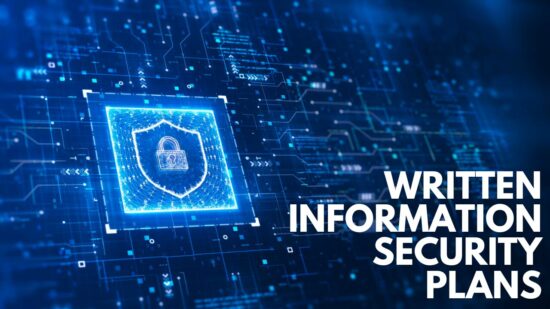With the increasing number of data breaches in the news, you or the decisionmakers in your organization may be weighing the benefits of investing in cybersecurity. As a security leader in your organization, you know the importance of protecting your organization’s digital assets but also know that the costs can be substantial. If you’re like most security leaders, you have the dilemma of trying to implement an effective security model with a limited budget. Instead of applying inadequate security solutions with gaps of protection, consider persuading the decisionmakers to increase your budget as appropriate. You may be apprehensive to do so but neglecting to provide sufficient security protection for your organization can be more costly than increasing your budget. According to the IBM 2019 Cost of a Data Breach Report, the average data breach costs an organization $3.2 million. If you’re motivated to approach your decisionmakers, before you approach them, conduct a risk assessment to determine the needs of your organization and the estimated budget necessary to invest in an applicable security model.
During your risk assessment, here are 10 signs that you need to invest in cybersecurity:
- You don’t have security policies.
- The structure of your organization has significantly changed.
- Your industry is heavily targeted.
- Your industry has new cybersecurity regulations.
- Your network downtime is costly.
- You don’t have an employee training program.
- Employees receive a lot of spam emails.
- Your security team is overworked.
- You are using outdated security solutions.
- Your organization has experienced a security incident.
1. You don’t have security policies.
You should develop a formal security policy that outlines the key assets and technologies that your organization uses and defines the protocols for securing each one. The basic elements to address in the policy are application security management, network security management, and remote security management. A best practice is to align the protocols with the five elements of the National Institute of Standards and Technology (NIST) cybersecurity framework: identify, protect, detect, respond, recover.
2. The structure of your organization has changed.
As your business grows, so should your security solutions. Moving data to the Cloud, employing remote workers, or implementing a new BYOD policy are changes that can increase the entry points to your data. These changes require additional solutions to address the increase in network access and methods of access. Moving data to the Cloud is especially significant because your data has moved to a location with less visibility. There may also be multiple third parties involved in managing your data.
3. Your industry is heavily targeted.
All organizations should implement security protections. However, there are organizations that should seriously consider investing in cybersecurity because of their industry. Cybercriminals tend to seek targets with the greatest impact. According to security certification and training firm Infosec, the following industries are targeted most often:
- Healthcare
- Manufacturing
- Financial services
- Government agencies
- Education
4. Your industry has new cybersecurity regulations.
The continual increase in security breaches has resulted in regulations becoming more prevalent. If your organization has regulations, it’s a foregone conclusion that you should invest in cybersecurity. In most cases, regulations are designed to ensure that organizations with a greater security threat are implementing adequate security protocols to protect their clients. Security regulations are also executed to ensure that organizations employ a security policy that includes response and recovery components that expeditiously communicate information about a data breach to all affected parties. The New York State legislature passed the SHIELD Act in 2019. Other states have passed similar laws. Governments in other countries have also passed security laws. TCDI, a company that develops security software, provides a list of relevant cybersecurity regulations.
5. Your network downtime is costly.
Network downtime affects an organization’s bottom line. If the costs to restore your organization’s network are increasing, that is a red flag that you need to rethink your security model. Common reasons that a network goes down include outdated software, applying a patch or update that breaks existing software, and human error such as network misconfigurations. These tasks may seem mundane, but negligence in carrying them out is a common source of cyberattacks. According to a report by Ponemon Institute, 60% of the respondents to their survey stated that their security breaches were caused by neglecting to apply an available patch. We’ve already discussed the average cost of a security breach.
6. You don’t have an employee training program.
Employees are considered the first line of defense for cybersecurity because their behavior is linked to key entry points to the network.
The following are examples of improper employee behavior that can lead to an organization experiencing a security incident:
- Responding to a phishing email
- Losing a company laptop
- Using weak passwords to access company applications
- Downloading unapproved software onto a mobile device used for work
Developing a comprehensive training program that teaches employees proper security behavior and stresses the importance of practicing that behavior (and repeating that information often) will help to mitigate your organization’s security risk.
Here are some tips published in Government Technology magazine to help you create an effective cybersecurity awareness program:
- Choose interactive versus static material
- Focus on changing behavior and establishing a culture of cybersecurity
- Make the training a requirement for everyone
- Make the training fun
- Solicit feedback from the trainees
- Use a variety of methods, such as emails, newsletters, and posters to keep the message in front of employees
7. Employees receive a lot of spam emails.
Malware is becoming a common nuisance in the workplace. A highlight of the Cisco’s 2020 CISO Benchmark Report is that malware (and other types of malicious spam) occupies the first seat on the list of cited causes of security breaches. Ransomware is a type of malware that locks an individual or company from an asset and then requires payment to regain access to that asset. This type of threat is becoming more common due to the popularity of digital currency. Ransomware is particularly dangerous to organizations because it is responsible for causing the “most destructive amount of downtime (more than 17 hours)” according to the CISO report.
8. Your security team is overworked.
Cybercriminals are constantly looking for ways to infiltrate systems. A non-existent or stagnate cybersecurity budget can lead to problems. One of the side effects of implementing a cybersecurity model that is insufficient for your organization’s needs is that your security team must do more work. The tale-tell signs of an overworked team include constant network problems, significant amounts of overtime, and low morale.
9. You are using outdated security solutions.
Are your security policies full of manual processes that your IT team performs on a regular basis? Depending on manual processes for your security solutions creates a reliance on human input, which is a common cause of security issues. This is more of an issue when the manual processes are performed for high-priority assets in your organization. A better plan is to use other solutions, such as automation, for your most critical assets and save manual processes, if you must keep them, for less critical assets. You should also determine if there are any compliance regulations that require you to use a specific level of security.
10. Your organization has experienced a security incident.
Security incidents, regardless of impact, are serious matters. They compromise the privacy of your organization’s employees and client’s, taint your reputation, and cost money (usually a lot) to resolve. Some organizations can’t return to business as usual after a security issue because their reputation in the industry has become questionable or they can’t absorb the resolution costs. Of course, it’s possible for an organization to recover from a security issue, but there are important steps you need to take. Digital Guardian, a data loss prevention software firm, interviewed data breach experts about their recommended next steps after a data breach.
The following are a few of the tips from the data breach experts:
- Contain the incident
- Communicate effectively with affected parties
- Investigate the incident to understand the cause
- Protect your business from future attacks
Takeaway
IBM’s statistic mentioned at the start of this post regarding the average cost of a security breach is a daunting figure that should motivate you to make cybersecurity a priority. By simply assessing your current situation, you can determine if your organization should invest in cybersecurity. The items listed above are great starting points for your assessment. To obtain a complete picture of your organization and learn the solutions that are best, an in-depth assessment will work best.
BACS provides a full spectrum of cybersecurity solution services that starts with understanding your goals, assessing the specific needs of your organization, and then developing an appropriate plan and strategy for your architecture. Our distinction in the industry is that we are a team of cybersecurity experts that are lead organizations on a path of successful IT infrastructure protection.







